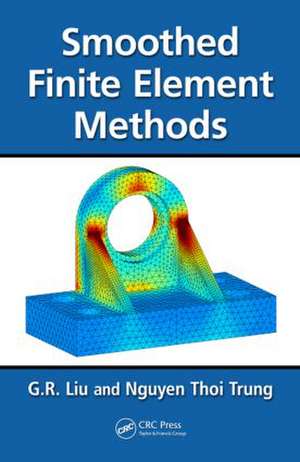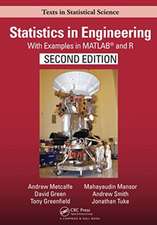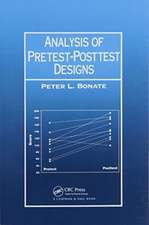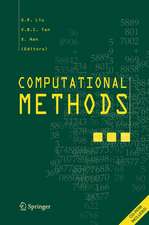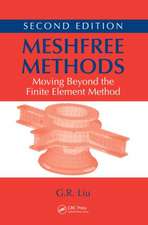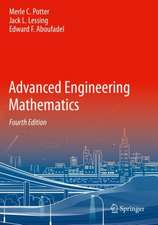Smoothed Finite Element Methods
Autor G. R. Liu, Nguyen Trungen Limba Engleză Hardback – 8 iun 2010
After introducing background material, basic equations, and an abstracted version of the FEM, the book discusses the overall modeling procedure, fundamental theories, error assessment matters, and necessary building blocks to construct useful S-FEM models. It then focuses on several specific S-FEM models, including cell-based (CS-FEM), node-based (NS-FEM), edge-based (ES-FEM), face-based (FS-FEM), and a combination of FEM and NS-FEM (αFEM). These models are then applied to a wide range of physical problems in solid mechanics, fracture mechanics, viscoelastoplasticity, plates, piezoelectric structures, heat transfer, and structural acoustics.
Requiring no previous knowledge of FEM, this book shows how computational methods and numerical techniques like the S-FEM help in the design and analysis of advanced engineering systems in rapid and cost-effective ways since the modeling and simulation can be performed automatically in a virtual environment without physically building the system. Readers can easily apply the methods presented in the text to their own engineering problems for reliable and certified solutions.
Preț: 1025.44 lei
Preț vechi: 1448.20 lei
-29% Nou
Puncte Express: 1538
Preț estimativ în valută:
196.21€ • 204.88$ • 162.03£
196.21€ • 204.88$ • 162.03£
Carte tipărită la comandă
Livrare economică 15-29 aprilie
Preluare comenzi: 021 569.72.76
Specificații
ISBN-13: 9781439820278
ISBN-10: 1439820279
Pagini: 692
Ilustrații: 361 b/w images
Dimensiuni: 152 x 229 x 39 mm
Greutate: 1.05 kg
Ediția:1
Editura: CRC Press
Colecția CRC Press
ISBN-10: 1439820279
Pagini: 692
Ilustrații: 361 b/w images
Dimensiuni: 152 x 229 x 39 mm
Greutate: 1.05 kg
Ediția:1
Editura: CRC Press
Colecția CRC Press
Public țintă
Mechanical, structural, civil, and aeronautical engineers; computer aided engineers/computer aided designers; mathematicians and computational scientists; senior undergraduate and graduate students in engineering.Cuprins
Introduction. Basic Equations for Solid Mechanics. The Finite Element Method. Fundamental Theories for S-FEM. Cell-Based Smoothed FEM. Node-Based Smoothed FEM. Edge-Based Smoothed FEM. Face-Based Smoothed FEM. The αFEM. S-FEM for Fracture Mechanics. S-FEM for Viscoelastoplasticity. ES-FEM for Plates. S-FEM for Piezoelectric Structures. S-FEM for Heat Transfer Problems. S-FEM for Acoustics Problems. Index.
Notă biografică
G.R. Liu is the director of the Centre for Advanced Computations in Engineering Science (ACES) as well as a professor and deputy head of the Department of Mechanical Engineering at the National University of Singapore.
Nguyen Thoi Trung is a lecturer in the Department of Mechanics in the University of Science at Vietnam National University in Ho Chi Minh City. He is also the CEO of the Friends of Science and Technology (FOSAT) Group and a researcher in the Faculty of Civil Engineering at Ton Duc Thang University in Ho Chi Minh City.
Nguyen Thoi Trung is a lecturer in the Department of Mechanics in the University of Science at Vietnam National University in Ho Chi Minh City. He is also the CEO of the Friends of Science and Technology (FOSAT) Group and a researcher in the Faculty of Civil Engineering at Ton Duc Thang University in Ho Chi Minh City.
Recenzii
Liu and Nguyen introduce newly developed S-FEM models that combine FEM and mesh-free techniques, and explain their application to fracture mechanics, plates, piezoelectrics, heat transfer, and acoustics problems. Intended for mechanical and structural engineers, the graduate textbook describes each step in the S-FEM method and analyzes the properties of S-FEM models using smoothing domains based on cells, nodes, edges, and faces. Numerical examples are provided for an interfacial crack, elastic strain on a hollow sphere, plate buckling, an engine pedestal, and acoustic pressure distribution in a car passenger compartment.
—SciTech Book News, February 2011
—SciTech Book News, February 2011
Descriere
Drawing on the authors’ extensive research results, this book presents the theoretical framework and development of various S-FEM models. It discusses the overall modeling procedure, fundamental theories, error assessment matters, and necessary building blocks to construct useful S-FEM models. The authors focus on several specific examples, including cell-based (CS-FEM), node-based (NS-FEM), edge-based (ES-FEM), face-based (FS-FEM), and a combination of FEM and NS-FEM (αFEM). These models are then applied to physical problems in solid mechanics, fracture mechanics, viscoelastoplasticity, plates, piezoelectric structures, heat transfer, and structural acoustics.
